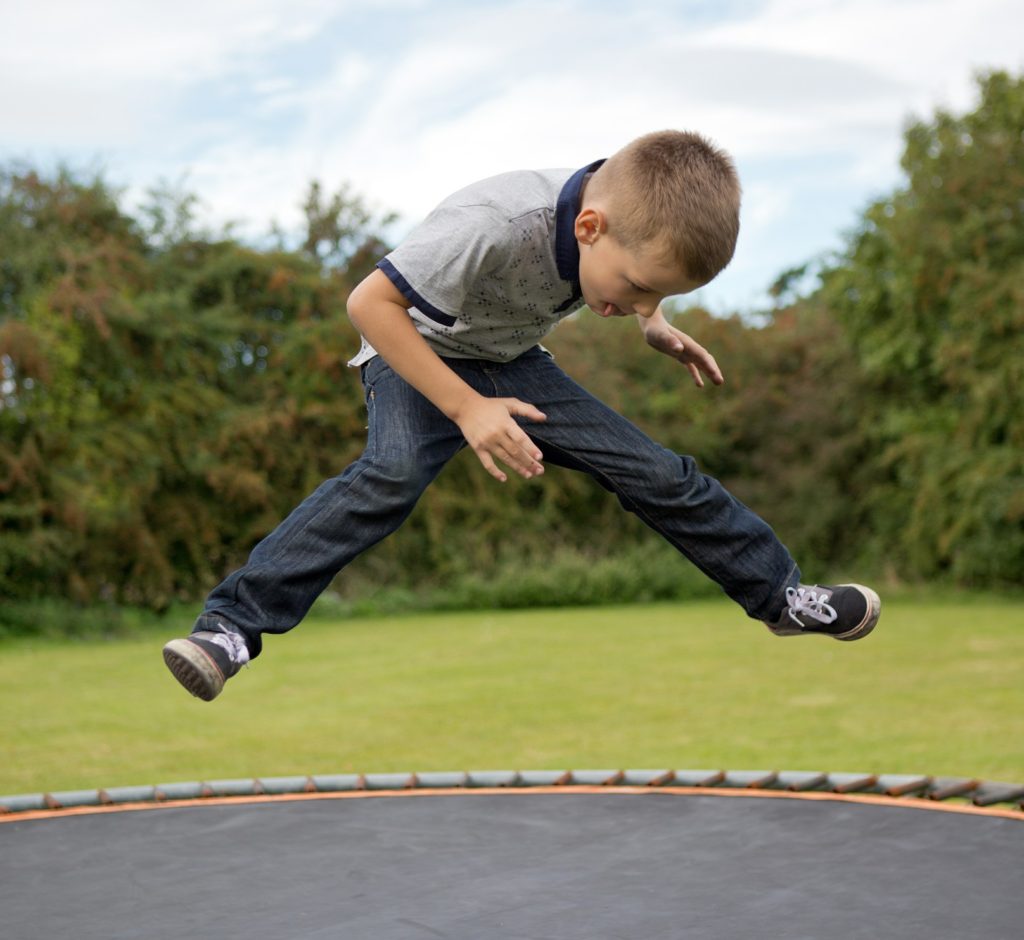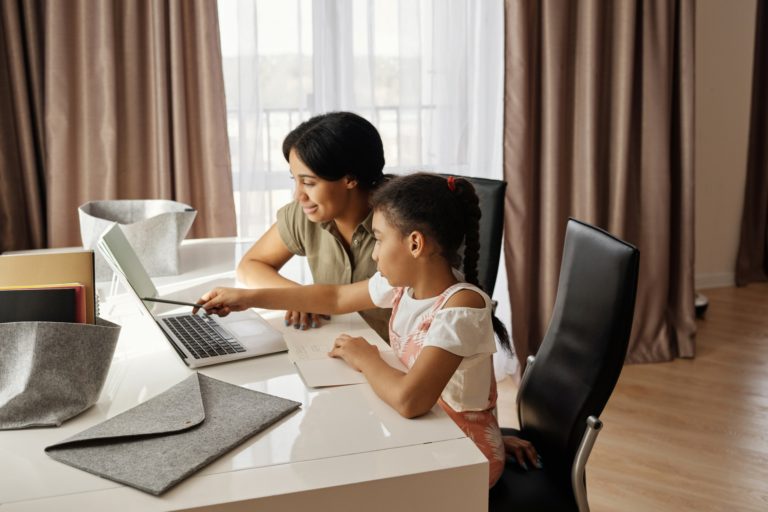So many parents around the world have had to make the huge adjustment to remote learning with their children. Initially, from March through June in the USA, this meant pressing the pause button on plans and projects as well as slowing progress in many areas of social and emotional development. It was a fly by the seat of your pants time with little opportunity to stop and think about the best ways to deal with the changes. T’s teachers did an amazing job of rolling with the needs of the kids but it was still really hard work for us.
With more time to plan and the practice run of spring behind us, we started this school year with a little more clarity. I am by no means suggesting that we had a smooth run into the year but at least we knew what difficulties we may face. I’d like to share some of the strategies we have found helpful. Some of these may be relevant to all kids and some relate more particularly to sensory needs, autism and PDA (Pathological Demand Avoidance).
While many schools are now back in person there are a lot of families, including ours, who are choosing to continue remote learning for the time being. I hope that you find some of these ideas helpful.

photo credit August de Richelieu on pexels.com
1. Listen to break requests This is probably the most important one for me to keep in mind. I know in my head that every child is different, has different attention spans and requires different conditions to succeed. I also know that success looks different for each child. Despite this knowledge I can at times find myself setting the same expectations for T as other children are able to meet. Remote learning has given me a front row seat to viewing T’s learning needs and how they sometimes differ from others. I have noticed that he is able to take in information when it looks like he’s not listening. He often does not need the longer explanation to understand what to do. He can often complete a task in a shorter time than is designated. He knows when things are getting too much for him. Given all these factors it is perfectly reasonable that he can take a break if the explanation if getting too long, if others are asking a lot of questions or taking a longer time to complete a task.
T has a break card system implemented by his BT (Behavioral Therapist) who asks him to give her a 5 or 10 minute card to indicate that he needs to step away from the screen or the task. In order for him not to use these as a way to avoid an activity we remind him that he can take a break when he needs to and that if he’d rather do the activity a little later with me or the BT that is fine. If he chooses the break he tends to really need it. If he doesn’t need it he’ll usually stay and work on the task rather than have to do it after class time.
2. Proprioceptive breaks Proprioception is one of our 8 senses. Read more here. If your child is not getting enough proprioceptive input or getting too much it can impact on their ability to sit still, focus and remain regulated. I have tried to add a brief proprioceptive workout to our before remote school routine in order to help T’s body be regulated and ready to learn. This 8 minute HIIT (High Impact Intensity Training) workout for kids helps T’s emotional regulation. It allows him to participate in at least the first session of the day. I also encourage a minute jumping on the mini trampoline, ninja kicks, crawling through stretchy tunnel or any other quick proprioceptive exercises between class sessions. Other good movement breaks that get T moving are the Indoor Recess videos on youtube.
If you have any good ideas for getting our kids moving between class times I’d love to hear about them.

photo credit RonPorter pixabay.com
3. Swing breaks T almost always chooses to spend time in an indoor swing when he needs to take a break from concentrating on a school task. Swinging in a lateral motion is more calming for T than spinning. For this reason a saucer swing is a better than the stretchy lycra style. He loves to snuggle with his stuffed toys and a pillow and cover up with a weighted blanket as well as a quilt. He usually closes his eyes and wants to be pushed ‘higher and faster!’ There are times when he seems to need more than a couple of minutes on the swing so if possible I bring his iPad nearby so he can continue to listen to what is happening in class.
4. Planned snack breaks This may be an obvious one but fitting in a snack and a good sensory/ movement break in a short time between classes as well as allowing for the time required for transitioning can be difficult. It is helpful to have the snack prepped. I try to include something crunchy and a drink with a straw for proprioceptive input. Thinking ahead so that the snack is ready to go saves precious time that could be used for sensory input. Right now he asks for apple slices and crackers with cream cheese or cereal!

Sarah Gualtieri – Unsplash
5. Allow for transition time As anyone who works with kids on the spectrum knows, transitions are hard! Some kids need lots of warning that a transition is coming and then plenty of time to finish one task and move to the next. For a child with PDA a transition can be difficult even when the next task is a preferred activity. When anxiety is very high it can be a transition to get off one chair to a standing position or walking through a doorway. Everything is a demand. Everything needs to be avoided. Allowing the time that is needed to adjust to the next task is more important than being on time and being completely dysregulated or in a heightened state of anxiety. I find this hard as I really don’t like being late or causing others to wait for me but I am working on letting my child take the lead on what he needs to be able stay regulated. It is important to remember that an individual with PDA needs to be in control and being asked to rush is most definitely a demand being placed on them. Allowing the transition time and being a few minutes late for a session is better than triggering a meltdown and missing half the class. I have communicated this to T’s teachers so they know to go ahead with their lesson as we will be there when we can be there. Being at home all the time as we are during this pandemic makes for a generally low demand environment and so anxiety levels are lower. This means that he is able to do more of what is asked of him without feeling out of control. After such a long time as a remote learner T is now able to be on time most of the time and is feeling proud to be doing it.
6. Device choice The fact that remote classes are conducted on a screen causes endless distraction for T. He will often be unable to control the impulse to play with the screen. I have found that using a tablet for T’s online class sessions is less distracting than a laptop. With fewer features and no keyboard he is able to sit further away from the screen and engage for longer.
Recently I found an old style smart typer which is basically a keyboard with a three line sized screen. T can type up some of his work rather than writing by hand and then we can transfer the file to a computer and send it to his teachers. This has made a big difference because as soon as he gets a computer in front of him he becomes highly distracted by all the features that can be played with and he is not able to engage with teacher or peers.

Photo credit pixabay.com
7. Watching is participating This is also a reminder for me. I can get caught up in what I see other kids doing and how they seem to be participating in a class session. It is good for me to remember that T is his own person and the expectation that he listens and responds to the teachers and also follows the task directions places a lot of demands on him. One way that I am able to help reduce his anxiety is to remind him that he can watch the activity before joining in. Often when he stands back and watches he is able to see that the task is something he knows how to do and will join in. Sometimes he will ask me to do the writing for him which I do initially and then can often have him write a few words once he has relaxed into the task. Removing all the expectations up front so he can work on one at a time gives him the control he needs as a kid with PDA.

8. Communication I am in a fortunate position with Ts teachers as they are responsive to and appreciative (hopefully!) of frequent communication. Having reached a point in my parenting where I am confident listening to my mamma gut I will now let them know things that may seem small but that I know could make a big difference in how a class session runs. This communication also extends to T’s therapists who are involved in his online classes. It is better for me to offer too much feedback and make sure everyone is on the same page.
9. Information ahead of time Given the great communication I have with T’s teachers I am able to ask for information about lessons ahead of time. Each morning as part of Morning Meeting time there is a question of the day. T’s teacher emails me these questions ahead of time so that we can talk about them and he can feel prepared. He feels very anxious if he does not know how to answer a question and used to consistently ask to take a break as soon as the question of the day was asked. Now he is often the first to answer and rarely takes a break during this lesson time. Small accommodations can make a noticeable difference to how T feels and how he is able to participate in remote learning.

I hope that if you and your children are remote schooling that you are discovering ways to support them and that the experience is as positive as it can be. We are all learning so much about ourselves and our children as we are forced to work together in this very different time. I see that through all my children’s struggles to connect with their teachers and other students they are learning. They are learning skills that they would not have otherwise have learned and discovering pieces of themselves that may have remained unknown. We are all in this together and I truly hope that on the other side we hold on to the lessons we have learned and that we respect teachers as they have always deserved to be respected.
What are some strategies you have found helpful in this time of remote learning?
How has remote learning been going in your family?
What skills have your children developed that that they may not have in an in person learning environment?




The strategies here are very practical. I am sure they will be really useful even when school goes back to in classroom learning.